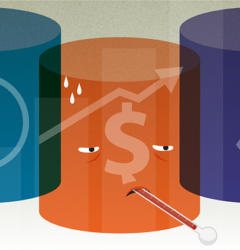- Email:info@acumenian.com
- Phone:954-469-4444
11 Sep

When you go to the movies or read a book, there are many types of stories; some are about success, defeat, or even terror. In the same way, there is always a hidden story in the data that you can’t afford to miss.
By Orlando A. Guzman Castellano, Associate Advisor
Raw data is typically analyzed using descriptive and predictive methods. Both bring valuable insights from the story embedded in the data but are unique in their approaches.
Descriptive Analysis helps us understand the data, telling a story that covers the past and the present. This method offers the summary and visualization of data to make it more accessible in decision-making. Also, it can unveil which methods or products were effective and performed best, what sectors had an impact, identify trends and patterns, and many more insights.
On the other hand, Predictive Analysis uses what was learned in the story that the descriptive Analysis told us to act and make decisions for the future. It serves as the fortune teller of data, using statistical models and algorithms with that data history to predict what we might expect clearly. This is key to preparing for upcoming events and improving performances.
Let’s imagine a situation in which a company is looking to assess its sales performance over the last ten years. The company could retrieve valuable historical information in those years with descriptive Analysis. It can identify trends and rates at which the sales fluctuated and which demographics are the most that buy. The company can understand its current status and know how to move forward by visualizing, summarizing, and painting a clear picture of the events with this data.
Now, if we consider the same company briefly described before, let’s say it wants to attract new customers to buy its products. It can forecast expectations using predictive Analysis (the fortune teller of data) and carrying out statistical models and machine learning algorithms. This is key to moving forward and taking risks with the knowledge of what we might expect in the future. Not taking advantage of the information available in data can lead to failures in the business.
Both analyses are indispensable and dependent on each other. Descriptive Analysis organizes our past data to learn the performance and what worked, while predictive Analysis uses that information gathered to make decisions moving forward to seize opportunities. These methods both empower businesses to see the value in data and how far they can reach with the knowledge of their information, and all it takes is a great analytics team that takes the time to understand and helps visualize all the information that enters so the company can have a story with a happy ending!

Analytics isn’t just about crunching numbers; it’s about uncovering compelling narratives within data patterns. Understanding these patterns helps you make informed choices, allocate resources efficiently, and drive growth and success for your business.
TAGS : #analytics #data
Recent Posts
Archives
Categories

About Us
Follow Us
Email: info@acumenian.com
Phones:
Florida, US: (954) 469-4444
Puerto Rico, US: 787-474-0300








Recent Comments